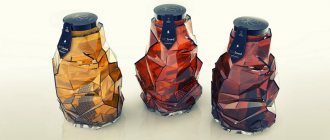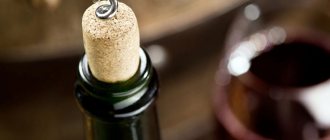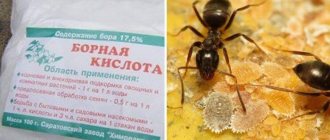- Suitable places
Storing wine is not an easy task: in order for the drink to ripen correctly and fully reveal its taste and aroma, a number of conditions must be met. In this material we will look at where and at what temperature to store wine. We will also find out how long the drink retains its quality after opening the bottle and how to extend this period.
Recommended storage conditions may vary slightly depending on the variety
Why storage conditions are important
As you’ve probably already heard, wine is not just a liquid, but a real “living organism” in which some chemical reactions and processes take place at every moment of time. After all, the composition of wine is very diverse - inside the glass container, in its “water base”, there are about 600 elements, both dissolved and not so much! 8-() This is not only a mass of various microelements and vitamins, but also sophisticated chemicals (alcohols, polysaccharides, amino acids, proteins, peptides, organic acids, esters, phenols, aldehydes, acetates) and even, excuse me, ammonia!
All this, in the language of chemists, “substance” (and sages and poets call it “The Beauty of the Universe” or “Elixir of the Gods”) is constantly changing, everything interacts inside it: something strengthens, something weakens, something disappears , and something even appears!
And of course, the speed and, most importantly for us, the result of these reactions are influenced by several important external factors related to the storage conditions of the wine.
List of factors that significantly influence the storage of wine indoors:
- The presence of sunlight (or simply quite bright) light.
- Temperature fluctuations (as well as too low or too high temperature in the room where the wine is stored).
- Humidity in the room where the wine is stored.
- The presence of vibration and changes in the position of the bottles.
- The presence of pungent (aggressive) odors or harmful microorganisms (bacteria and fungi) in the wine storage room.
- Correct position (tilt) of bottles.
Let's now look at everything a little more thoroughly:
Bright (sunlight) light
Prolonged exposure to light accelerates the course of certain reactions in wine, which leads not only to its rapid and inharmonious ripening, but also to spoilage. For example, under the influence of light, reactions of sulfur compounds found in wine lead to increased hydrogen sulfide tones (smells like rotten cabbage or sewage).
That is why bottles of red wines, which generally allow them to be stored for a long time, are made of dark green glass. Even if light occasionally hits a bottle stored “in the light,” its exposure to light will be minimized. Some producers (seriously caring about their reputation in all situations) bottle their wines, the glass of which has a special property - resistance to ultraviolet radiation.
In addition to bright sunlight, wine extremely does not like the light of fluorescent (energy-saving or long round - like in offices, schools and hospitals) lamps. Due to the technology of their manufacture, they also emit, although not powerful, ultraviolet radiation.
Conclusion: store your “alcohol wealth” in special wine cabinets, which even have transparent doors that protect against ultraviolet radiation and significantly reduce the intensity of ordinary light. But even in this case, the cabinet should not be placed in a place with bright sun and light!
If you want to be more economical, place the bottles in a row (but steadily!) in your home closet, on lower shelves (closer to the floor) and always with tightly closing doors. If you want to be even more economical, just put the bottles in the most inexpensive open rack, but which is really worth it (ta-daaaam!) - in the dark and cool basement of a country house or cottage.
The light sources for all this are either not very powerful incandescent lamps or LED lamps.
White and red wine: are there any differences?
There are no particular differences in the storage conditions of red and white wine, but you should be aware of some subtleties. White wines should not be stored for more than two to three years, with rare exceptions - for example, if you are lucky and have Chardonnay in your collection. In this case, you can open it even after 20 years, if, of course, you have the patience and willpower to wait that long. Red wines can be stored for up to 10 years, unless we are talking about Burgundy or Bordeaux, since such wines will become even tastier and more aromatic after 100 years.
White, rose wines and champagne require lower storage temperatures, while red wines are considered less sensitive and unpretentious.
Temperature fluctuations
Incorrect storage temperature (too low and too high values in wine storage rooms), as well as its rapid and (or) significant periodic fluctuations, have an extremely negative effect on the results of long-term storage of your precious bottles (and, in general, any bottles of wine ).
Just as in the situation with bright light, an increase in temperature (-Oh hot!!!!) activates accelerated and not entirely balanced maturation of the wine. Which is completely logical and justified, because chemistry “works” here too. The “van't Hoff rule,” known in narrow circles of chemists and physicists, tells us that with every 10-degree increase in temperature, the rate of chemical reactions accelerates by 3-4 times. All this, as you understand, directly applies to wine storage.
When the temperature in storage is below 9-10 degrees Celsius, the “life” of the wine freezes, i.e. the process of maturation, or as many are accustomed to say, “aging”, practically stops. But we don’t need it at all. And we must still try to create such stable coolness.
But what do we get if we store wine at room temperature or slightly higher?
Norway recently decided to answer this question.
Experts conducted an experiment by sending the same red wines (Cabernet Sauvignon from Chile) for annual storage at different temperatures. So, wine stored at a temperature of 30-31 degrees - after six months it turned out to be in pretty bad shape - the taste and aroma “faded”, the bright floral and fruit and berry notes were gone. The same thing, but only a year later, happened with wine, which was stored at room temperature of 24 degrees.
However, several weeks of storing identical red wines at several different temperatures (within 10-30 degrees) did not reveal any significant differences in their taste, aroma and balance.
All this suggests that if you bought a couple of bottles for a “special” dinner at home or for an upcoming holiday, then even after a month of keeping the bottles in a cardboard box or in a cabinet in the kitchen or bedroom, nothing bad will happen to the wines.
The practice of world wineries and wine collectors has shown that the optimal temperature for long-term storage of wines is the temperature range between 11 and 14 degrees.
The second critical temperature factor influencing the quality of long-term stored wines was the so-called. " temperature shock ".
This tricky name means that within a short period of time (from several hours to 1 day) there is a sharp increase or decrease in temperature in the room where the wines are stored. This difference is dangerous already at a value of 4-5 degrees or more. And if such changes occur frequently in your premises (God forbid - every day), then you will have to forget about the excellent results of storing your wines for longer than 2-3 years.
Temperature stability in the room (wine cabinet) when storing wine is extremely important.
Even if you cannot provide it at the ideal (11 - 14 degrees) level, but you can guarantee the wines, for example, only 20 degrees Celsius, then try to do everything possible so that this temperature does not “jump” up and down often or within a short period of time.
Conclusion: For ideal storage of wine, you need a separate “wine” room with climate control. Optimally, a separate basement of a private house/dacha (this way you can save a lot on electricity (for cooling or heating) all year round), in which you can organize it.
In all other cases, the most correct decision would be to purchase a wine cabinet (or two, single-zone) with at least 2 temperature zones: cool (11-13 degrees) - for still white and rose wines, for sparkling wines, as well as for bottles stored for long-term storage, normal (16-18 degrees) - for still red and fortified wines. Which cabinets to choose - read my article “Choosing wine cabinets”.
However, not everyone can afford even a medium-sized wine cabinet (for 30-60 bottles), which costs several tens of thousands of rubles. In this case, your best choice is a shelving cabinet without temperature control. This should be installed in the coolest room. Again, the rule of temperature stability in the room, not only during the day, but even throughout the season, must be observed. The cabinet must have lockable doors (you can, of course, also have pull-out drawers, but this way you will “disturb” your wine every time you open them, which is also “not ice” - more on this in the fourth section of my article), to prevent light from entering.
The most valuable bottles that you would like to keep in storage longer, with this storage option, should be placed at the very bottom and so that you touch them less when removing other wines.
How and for how long can opened wine be stored?
A very important question is how long can you store open wine when you have enjoyed the taste and aroma of the drink, but decided to save it for the next lunch or dinner. Most often, an open bottle is not stored for longer than three days. The fact is that immediately after contact with air, the oxidation process begins in the wine, which does not stop even after you close the bottle with a cork again. And if at first oxygen helps to reveal the whole bouquet of tastes and aromas, then later it has a destructive effect on the wine.
The quality of open wine deteriorates hourly, but this does not apply to fortified and dessert wines with high alcohol and sugar content - they can be left in the refrigerator for a week. Here are the approximate shelf life of noble drinks:
- 1 day - sparkling wines. Afterwards there will be no trace of the bubbles left.
- Up to 3 days - white, rose and light red wines. The richer the drink, the slower it loses all its taste properties.
- Up to 5 days - dense red wines.
- Up to 7 days - fortified and dessert wines.
Humidity
Humidity is an important factor that also affects the quality of long-term stored wine.
If your bottle will be stored on a rack, in a wine cabinet or in a basement for a year or two, then, in principle, high or low humidity, as well as its sharp fluctuations, are unlikely to have a significant effect on the contents of the bottle.
Because 98-99% of the vessel in which the wine is contained is glass that is not subject to humidity. And only a small part is the surface of the cork inserted inside the neck. If the cork is of high quality and the wine is stored in the correct position (more on this below), then the wine wets the cork, preventing it from drying out completely. In short and medium periods of storage, in this case, there is no need to worry about the “health” of the wine.
But what if you planned to keep “your charm” (some kind of “powerful” Barolo or Sassicaia) for five or ten years, or maybe even twenty-five?
Here we cannot do without competent accounting (or rather, creation) of humidity.
Empirically, winemakers and wine store owners have identified a “fork” - the lower and upper humidity values in the room (wine cabinet) where the wine is stored. The minimum humidity value is 50%, the maximum is 75%.
At lower humidity, the cork begins to dry out quite quickly and the wine will very actively try to get out from under it, and active odors (if there are any in the room) will “climb” there. With higher humidity in the room (including on the cork), there is a possibility of unhealthy microflora (mold, fungi) appearing, which can try to “crawl” through the same cork into the wine and spoil it.
Probably because of one, even a rather expensive, bottle of wine that you plan to store for 20 years, there is little point in installing a multifunctional and expensive automatic humidity maintenance system. However, if you have “what to lose” (10 bottles of Bordeaux Petrvs and the same number of Burgundy Romanee-Conti in long-term storage) then such a system does not look like an “expensive toy” and is simply necessary.
There are two main options for maintaining humidity in a wine cooler or the room where we store wine. This is a manual and automatic option.
The manual method consists of placing one or more containers in the place where the wine bottles are stored, into which we will periodically add water. The disadvantages of the system are clear - there is a lot of “fuss and movement” and rather rough parameters for the resulting humidity.
The automatic method is to install a special “smart” humidifier that has a tank or is connected to a water supply system, with a special electronic hygrometer (or several in different parts of the room), which will monitor and maintain the humidity of the room (cabinet) chosen by you personally. The only disadvantage of such a system is its high cost (as the sum of the cost of equipment, its installation, as well as many years of electricity costs).
Decide for yourself what to choose for your storage, based, of course, on your budget and the cost of your collection, which you plan to maintain for many years.
Vibration
Periodic “shocks” of stored bottles, as well as the emergence of the factors discussed above beyond the boundaries, negatively affect the taste, aroma and balance of wines stored for a long time. Shaking and vibration, as well as a rise in temperature, accelerate the ripening of wine and lead to an unusual course of those chemical processes that should occur during the organic “aging” of wine.
That is why, before storing bottles of wine for a long time, think through all the possible nuances associated with shaking:
— Which bottles will lie at the bottom or high (usually these are those that will not be removed from their places for years), and which ones will be at waist and chest level - always visible and always “at hand” for uncorking? — How convenient will it be for you to choose and search for which wine to open? — Will you “shovel through” half the bottles in your collection in search of the bottle you need right now?
Because coups, jolts and, worst of all, falling bottles are unacceptable.
Placing a wine cooler on a floor made of boards that sway and shake the stored bottles when walked is one of the unsuitable options. Rest is the basic condition for proper wine storage.
On the balcony
Storing wine on the balcony is highly undesirable. If it's frosty outside, it will simply freeze, and once defrosted, you can't eat it, but you can add it to a sauce or stew.
At temperatures up to +8°C, a precipitate often forms, which is commonly called tartar. It can also be used in cooking.
In the summer heat, it can be more than +40°C on a glazed loggia. Such conditions are not suitable for wine; it acquires an alcoholic aftertaste or even becomes vinegar.
Strong (aggressive) odors
Whatever one may say, natural cork will allow the wine, albeit at a micro level, to “breathe.” Just like oak barrels, without spilling a drop of their contents, “give up” water over several years, increasing the percentage of alcohol in the fortified wine stored in them (sherry, for example).
As a result, powerful and unpleasant odors in the rooms where wine is stored over a long period of time can add their own “fly in the ointment” to what we get in the bottle after many years of imprisoning the wine inside.
Therefore, all sources of strong, pungent, unpleasant odors should not appear where our wine is stored.
What is the aging potential of wine?
It is a known fact that the amount of time during which wine will definitely not spoil depends on its variety. The potential for aging will help determine how a drink will behave over a certain period of time. It depends on a combination of several factors:
- the grape variety that was used for cooking;
- region where raw materials grow;
- production technology;
- reputation of the manufacturer or vineyard;
- assessment level of the previous series of a similar variety.
As a general rule, red, white and aromatic wines have the greatest aging potential, while dry whites have the least potential.
Bottle position during storage
Wines closed with natural cork stoppers should be placed at such an angle that the wine wets the inner surface of the cork from the inside. “Just put all the bottles horizontally and on top of each other!” - someone will say. In principle, this can be done, especially if the bottles are the same and lie next to each other.
But again, we empirically found that the optimal position of the bottle is not a completely horizontal one, but one in which the inner surface of the cork is both wetted by the wine and in contact with the air “bubble” inside the neck. The ideal degree of shelf tilt for classic wine bottles is from 10 to 20 degrees.
With such a tilt and a fairly large vertical distance between the shelves, you will still be able to clearly see all the labels of the stored wines. Again, this can be afforded if there is sufficient space in the room and the appropriate shape of the shelving.
Just imagine how aesthetically pleasing and pleasant it is to walk past a wine cabinet with transparent doors (or, even better, side walls), seeing beautiful bottles of excellent wines lying around every day!
This is really great!
And now you are probably asking - “What should we do with wines that are sealed with glass or aluminum screw caps?”
Here everything is left to your discretion and the availability of shelving and storage space. Glass stoppers (common in Germany and Austria) are perfectly ground and seal the wine almost hermetically. The insert made of polystyrene foam, treated with a special food varnish, which is located inside the metal screw cap (cork) of many modern wines, “works” just as brutally.
The latest data from wine experts says that wines in bottles sealed with screw-on aluminum caps also have the opportunity to age adequately and “beautifully”. Therefore, you can, in principle, store wines with these types of corks vertically. However, in my subjective opinion, even rows of bottles lying with labels up at a slight optimal angle are the best option for wines with any type of closure.
What wines last long?
The aging potential of each variety is different. This means that some wines must be consumed young, while others must be aged for several decades. The red elite varieties last the longest, the aging period of which can be from 50 to 100 years. Mostly drinks made from white grape varieties are aged for a short time, with the exception of White Burgundy, which can last up to 20 years.
Please note that vintage wine, which can be stored for more than 5 years, is not cheap. The price for such a bottle is not less than 1000 rubles.










